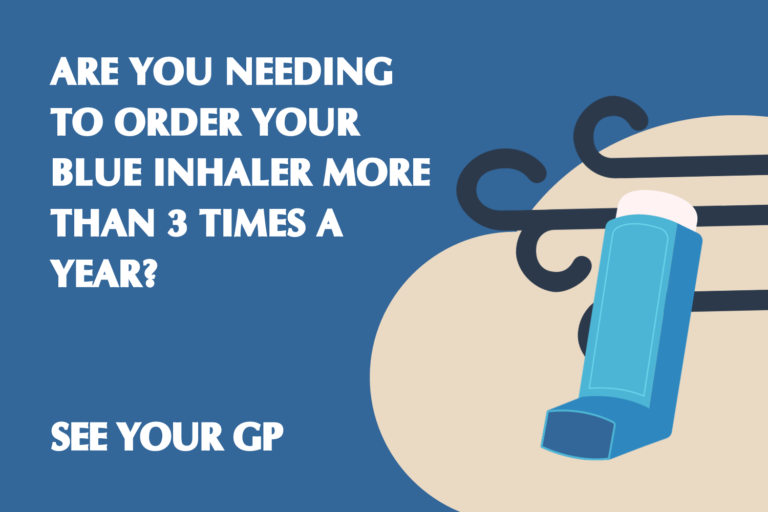We have been working with InHIP, the Innovation for Healthcare Inequalities Programme, to better understand Asthma Care across Stoke-on-Trent, and provide our champions with key messages to improve this.
The key message is that if you are using your blue (salbutamol) inhaler more than three times per week or need to order it more than 3 times per year, you are advised to see your GP or asthma care provider to review your care. This is a sign that your asthma is not well controlled, and overuse can cause side effects.
Alongside this, there are a range of new resources to help you understand Asthma testing (FeNO), and ensure your inhaler technique is its most effective.
Understanding the FeNO asthma test.
The FeNO test is useful to help you build a better understanding of your asthma and to manage it with the support of your asthma team. It measures in the inflammation in your airways which if not treated can cause asthma attacks. Understanding this inflammation is really useful in making sure your asthma is controlled and avoiding attacks.
What happens at the test?
You will take a big breath in and then gently breath out through the filtered mouthpiece into a small portable device for approximately 10 seconds. The test is much easier to do than other asthma tests such as spirometry or peak flow. The device shows the reading on its screen.
Ahead of the test, there are a few things you should avoid:
- Leave in plenty of time to avoid tiring yourself and affecting your breathing for at least 1 hour before the test.
- Avoid smoking for at least 1 hour before the test.
- Avoid hot drinks, caffeine and alcohol for at least 1 hour before the test.
- Avoid nitrate rich foods such as green leafy vegetables for at least 3 hours before the test.
Download this leaflet to find out more.
How is your inhaler technique?
Asthma + Lung UK provide helpful video tutorials and transcripts on how to use different inhalers, as well as lots of other help and advice.
Download a leaflet with QR codes for each inhaler type.
Looking for guides on managing asthma in different languages?
The Mid Yorkshire NHS have created a series of videos in different languages which you can access and share online via their YouTube channel.
Again, there is a QR code leaflet for this here.
Please bear in mind that the information in these resources should not substitute professional medical advice. If you find it hard to use your inhaler, or find breathing problems are interfering with your daily life and sleep please see your GP. And remember, if you have an asthma attack or cannot breathe normally and your blue inhaler isn’t helping or you don’t have one, call 999.


